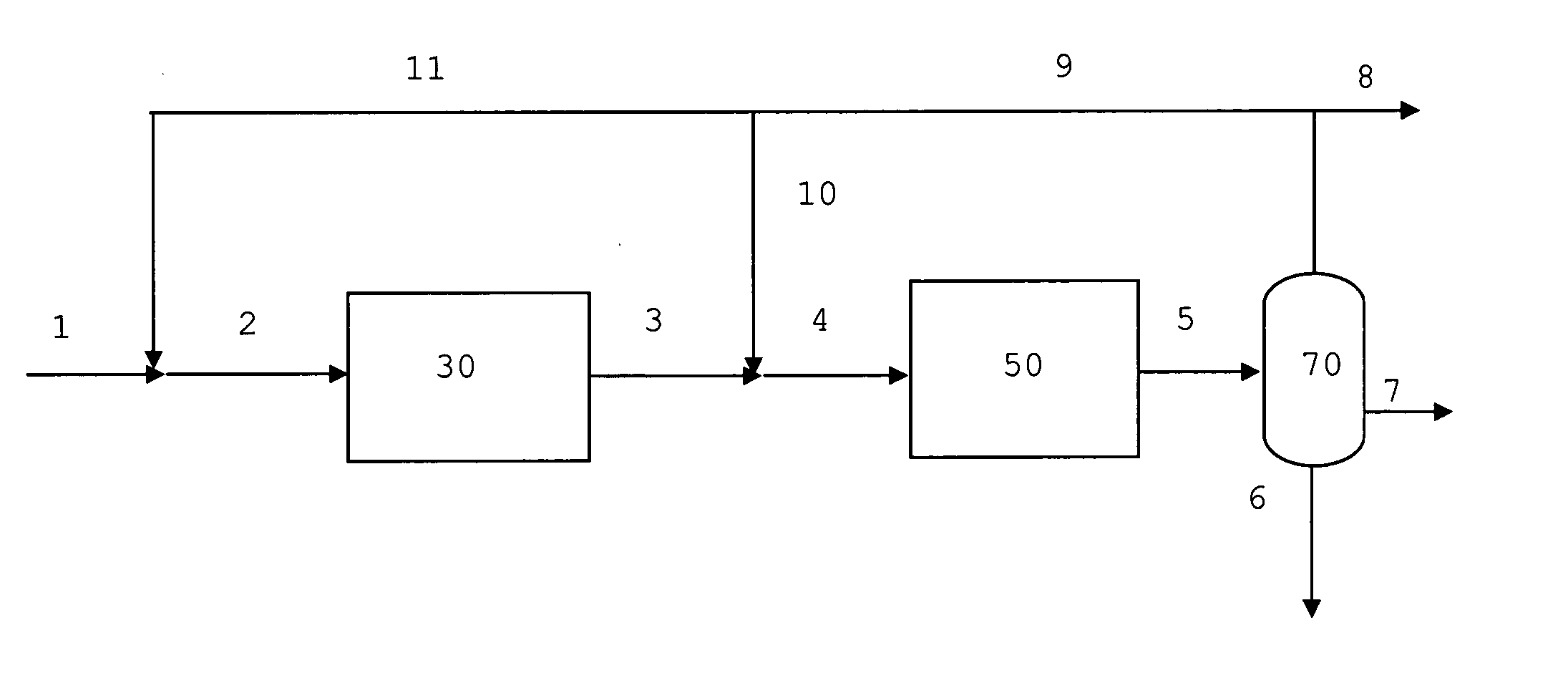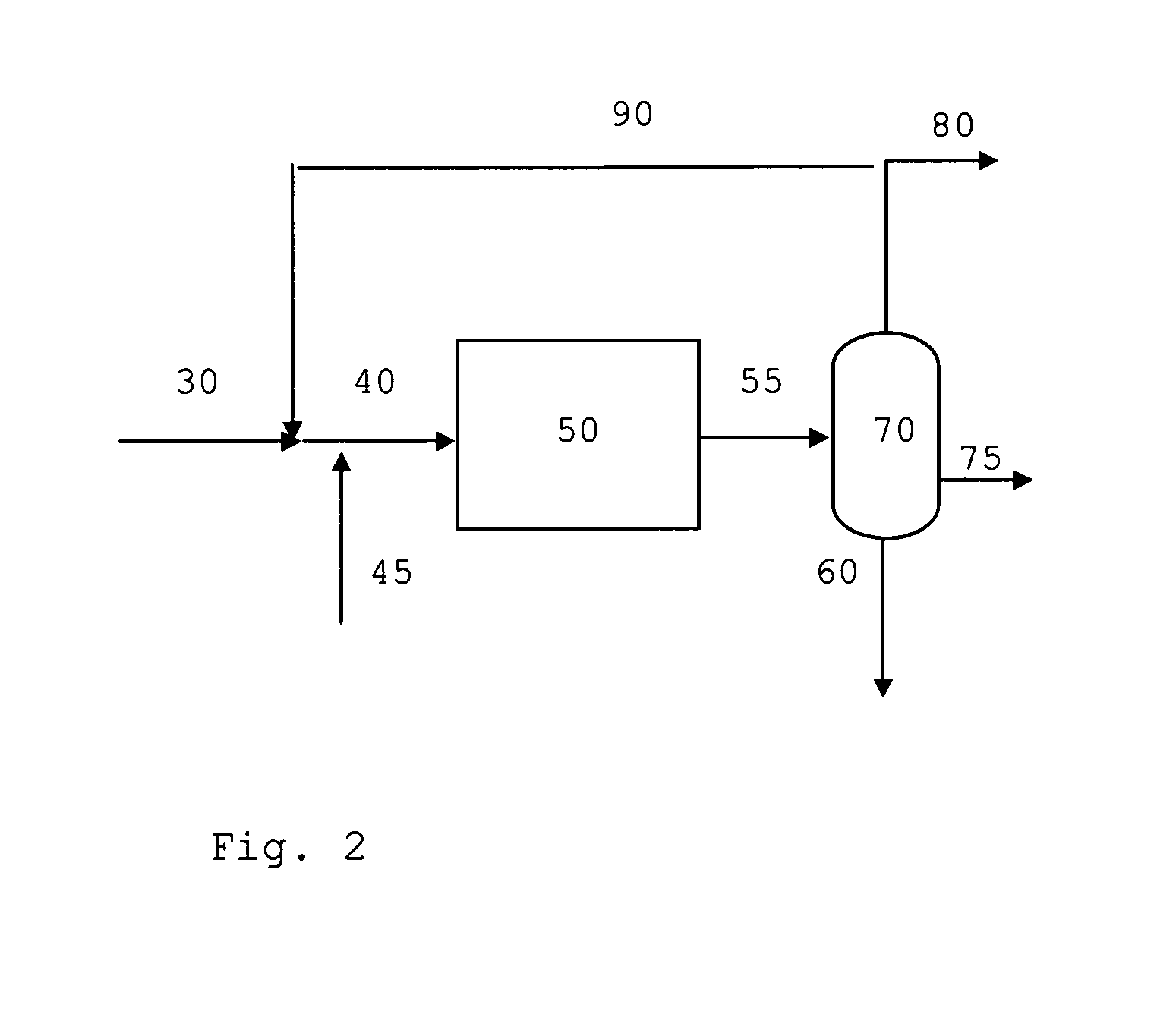Process For Converting Difficultly Convertible Oxygenates to Gasoline
a technology of oxygenates and conversion process, which is applied in the direction of organic chemistry, hydrocarbon oil treatment products, fuels, etc., can solve the problems of reduced catalyst cycle life, poor catalyst cycle life, and less satisfactory manner, and achieves less propensity for coke formation and longer catalyst cycle time in gasoline synthesis.
- Summary
- Abstract
- Description
- Claims
- Application Information
AI Technical Summary
Benefits of technology
Problems solved by technology
Method used
Image
Examples
Embodiment Construction
[0061]In FIG. 1 common unit operations such as heating, cooling and compression steps are left out for simplicity. Synthesis gas 1 containing hydrogen, carbon monoxide, carbon dioxide, proper in composition for the synthesis of methanol and / or dimethyl ether and inert components is mixed with a recycle stream 11 containing unconverted synthesis gas and volatile hydrocarbons. The admixture 2 is heated to about 220° C. and passed to the methanol or methanol / dimethyl ether synthesis section 30. The syntheses of methanol or methanol / dimethyl ether are catalysed by well known commercially available catalysts. The effluent 3 from the methanol or methanol / dimethyl ether synthesis 30 is optionally mixed with a second recycle stream 10 to obtain a mixed feed 4 containing oxygenate being passed at about 350° C. to the gasoline synthesis section 50. The effluent 5 enriched in gasoline components and water, light olefinic hydrocarbons, methane and paraffins is cooled and passed to a three phase...
PUM
| Property | Measurement | Unit |
|---|---|---|
| Volatility | aaaaa | aaaaa |
Abstract
Description
Claims
Application Information
 Login to View More
Login to View More - R&D
- Intellectual Property
- Life Sciences
- Materials
- Tech Scout
- Unparalleled Data Quality
- Higher Quality Content
- 60% Fewer Hallucinations
Browse by: Latest US Patents, China's latest patents, Technical Efficacy Thesaurus, Application Domain, Technology Topic, Popular Technical Reports.
© 2025 PatSnap. All rights reserved.Legal|Privacy policy|Modern Slavery Act Transparency Statement|Sitemap|About US| Contact US: help@patsnap.com



